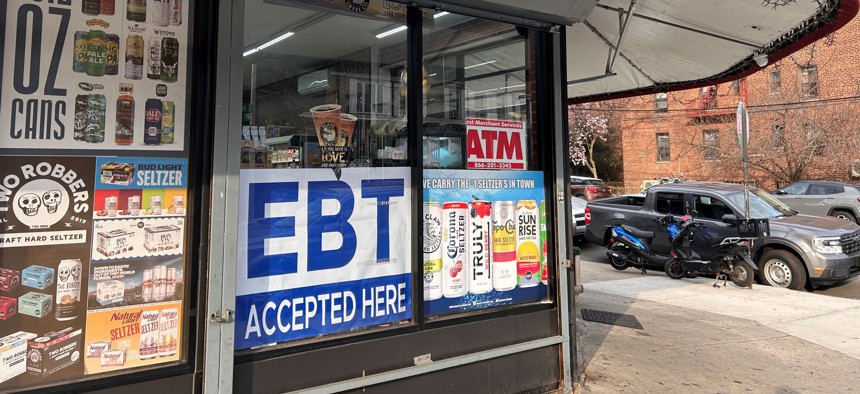Which states will join the new summer meal program for low-income kids? Here’s the list.

Local Bodega with EBT, Electronic Benefit Transfer, Accepted sign in window, Queens, New York UCG / Contributor / Universal Images Group Editorial
Thirty-five states are participating in the 2024 launch of a program that will provide low-income families $40 per child for groceries during the summer months when schools are not in session.
WASHINGTON — Children from low-income families in 35 states, four tribes and all U.S. territories will now receive permanent food assistance during the summer months when schools are closed, leaving children in 15 states excluded from the benefits.
Low-income families will now receive $40 each month for each eligible school-aged child, up to $120, to buy groceries beginning in the summer of 2024. The cash will come via electronic benefit transfer, often called EBT, and will be added to food assistance debit cards.
Congress authorized the program’s permanent status in December 2022.
The U.S. Department of Agriculture estimates that the program will reach 21 million children — or around 70% of U.S. children eligible for government meal programs — in the states, tribes and territories that signed on to be part of the initial launch.
A list of implementing agencies in those states, tribal lands and territories will be available in the spring of 2024, according to the USDA. USDA is encouraging families to check for updates at www.fns.usda.gov/sebt/household.
Notably the participating four tribes have lands in Oklahoma, Texas and Mississippi, three states that are not part of the launch.
The USDA said other states that will not provide the new grocery benefits for low-income children include: Alabama, Alaska, Florida, Georgia, Idaho, Iowa, Louisiana, Nebraska, South Carolina, South Dakota, Vermont and Wyoming.
Some states are preparing to launch the program in 2025, but the USDA did not identify which ones. Agency language in a press release Wednesday noted that “(w)orking with future implementers is a top priority.”
“No kid should have to spend their summer hungry, or without nutritious food,” USDA Deputy Secretary Xochitl Torres Small said in the press release.
“Summer EBT is a giant step forward in meeting the needs of our nation’s children and families throughout the year, and especially in the summer months.”
Schools are typically where low-income children can access free or reduced breakfast or lunch when classes are in session. Those children become vulnerable to hunger during the summer months, according to the USDA and several organizations that monitor child nutrition assistance.
Pilot programs
USDA cites success during several pilot programs conducted during the summers of 2012 to 2013 as the basis to recommend the new benefit. During the test programs, amounts ranging from $30 to $60 were provided during summers for families already enrolled in other summer nutrition assistance or the Special Supplemental Nutrition Program for Women, Infants, and Children, otherwise known as WIC.
The new program will expand the reach of already established summer meal programs, according to the USDA. Those programs include free summer meals via delivery or at designated community sites. Private nonprofits, local government agencies and youth sports programs are often the sponsors and played a significant role as the program expanded beyond summer during pandemic school closures.
Participation in those programs has decreased since the pandemic, according to an analysis by the Food Research and Action Center, or FRAC. The advocacy organization attributes the decrease in part to Congress’ delay in greenlighting community sponsors to operate the programs in 2022.
Top-ranking states for participation in the summer lunch programs in 2021 and 2022, according to FRAC’s analysis, included New Jersey, New York, Vermont, New Mexico and Maryland. The lowest-ranking states for average daily participation were Texas, Alaska, Oklahoma, North Dakota, Louisiana and Nebraska.
Arkansas Advocate is part of States Newsroom, a network of news bureaus supported by grants and a coalition of donors as a 501c(3) public charity. Arkansas Advocate maintains editorial independence. Contact Editor Sonny Albarado for questions: info@arkansasadvocate.com. Follow Arkansas Advocate on Facebook and Twitter.





